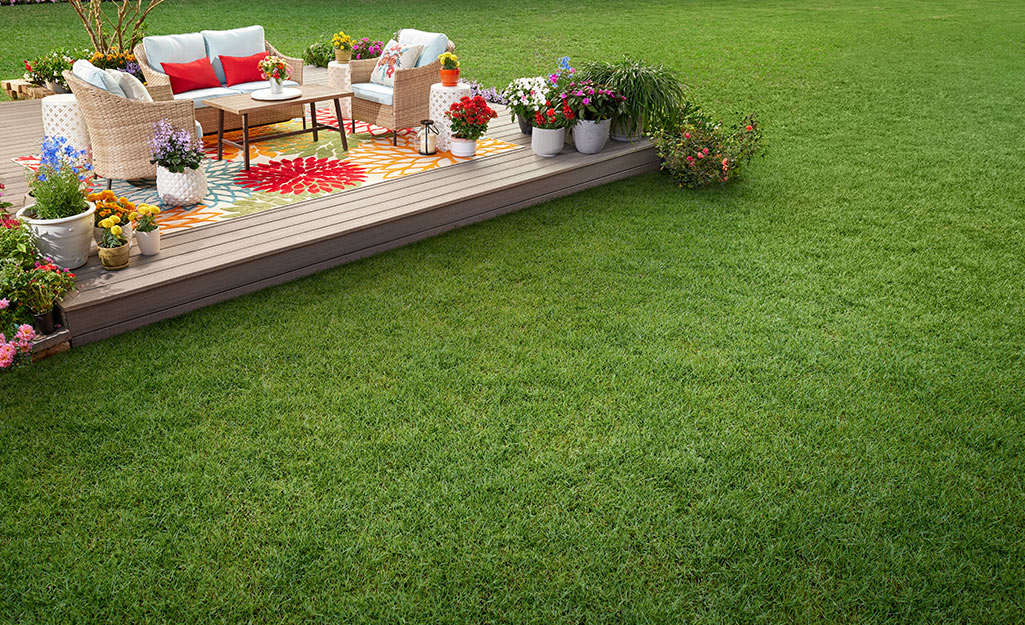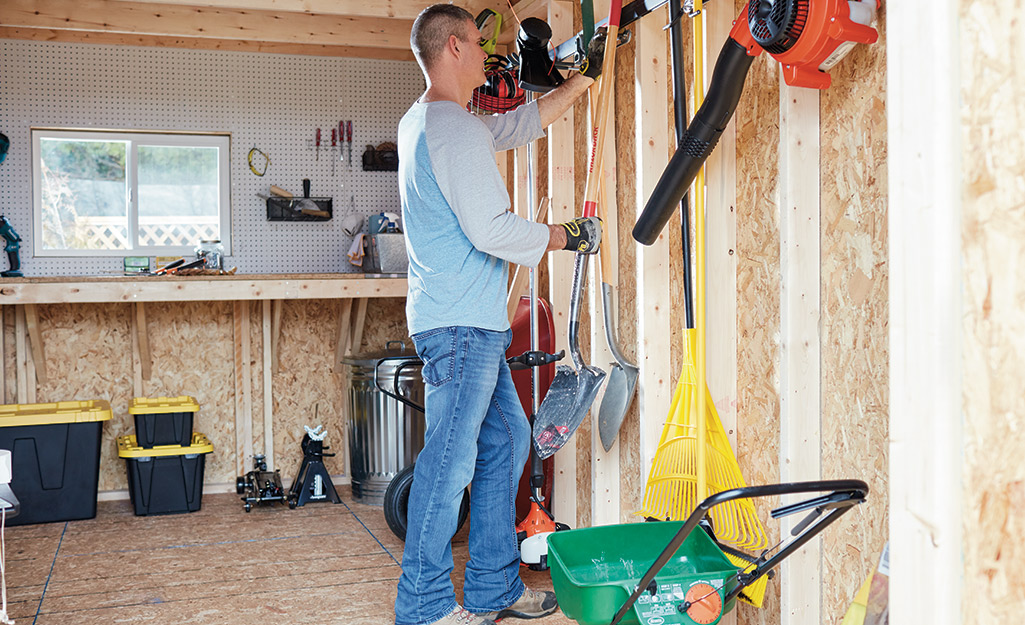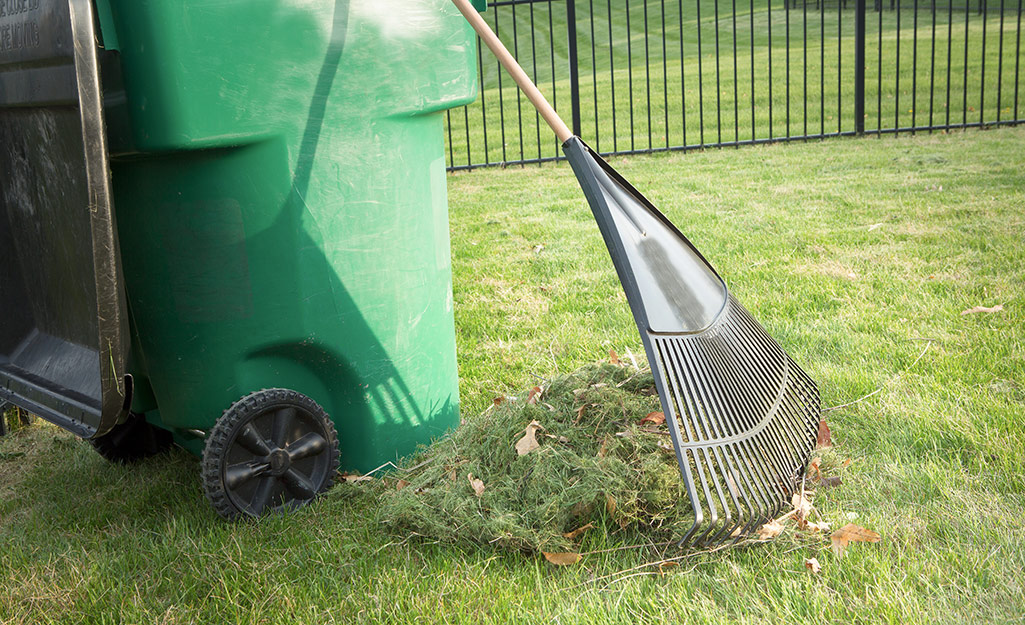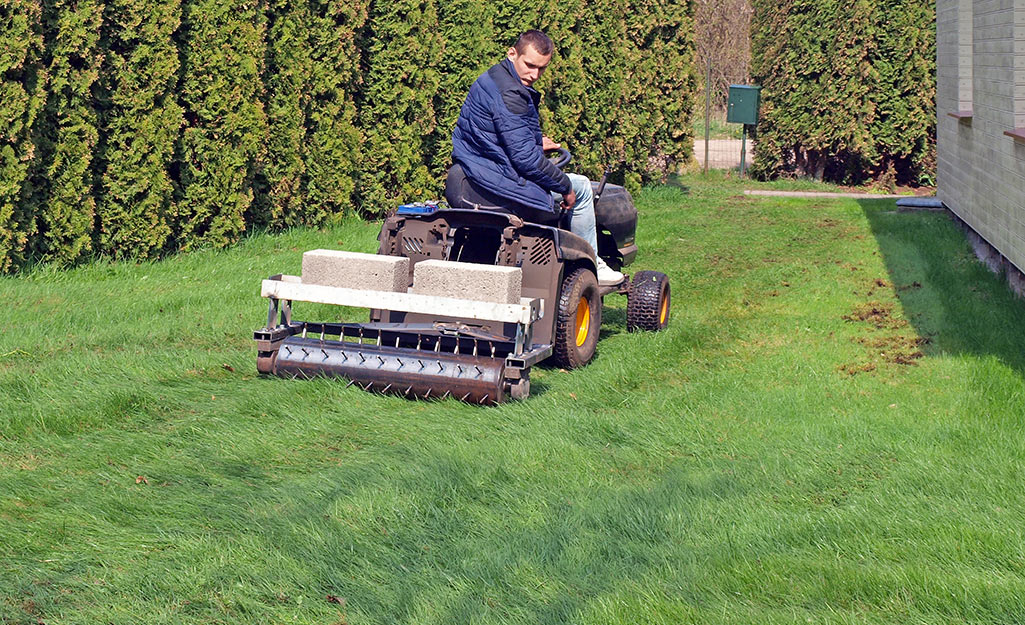A lush, green lawn can greatly enhance the curb appeal and beauty of your home But over time, all lawns can become patchy, thin, and invaded by weeds. Overseeding is an easy, effective way to thicken up bare spots, choke out weeds, and restore your lawn’s uniform appearance
In this comprehensive guide we’ll cover everything you need to know about overseeding including
What is Overseeding?
Overseeding simply means adding grass seed to your existing lawn without turning or tilling the soil. The grass seed blends in with and enhances the current grass. Overseeding improves color, thickness, and durability. It introduces hardier, upgraded grass varieties to the lawn.
Why Overseed Your Lawn?
There are several reasons you may want to overseed your lawn:
- Bare patches from pet urine, heavy foot traffic, drought damage, or disease
- Poor color from depleted nutrients or shade
- Thin turf from old age or improper mowing
- Weed infestation choking out the grass
Overseeding enhances the lawn’s appearance by filling in bare spots and thickening thin areas. It chokes out weeds by encouraging dense, vigorous grass growth. The newer grass varieties resist disease, insects, and environmental stress better than older types. Overall, overseeding restores your lawn to a lush, green, weed-free state.
When to Overseed Your Lawn
Timing is crucial for successful overseeding. Cool-season grasses like bluegrass, ryegrass, and fescue grow best when overseeded in late summer or early fall. The soil is still warm, encouraging fast germination. But the temperatures are cooler, meaning less competition from heat-loving weeds. Cooler fall temperatures also reduce stress on young grass seedlings.
Warm-season grasses like bermuda, zoysia, and centipede do best when overseeded in early spring. The soil starts warming up, allowing for quick germination. The new grass has time to mature before the intense heat of summer returns.
Overseeding outside the optimal time for your grass type will likely result in poor germination and growth. Consult your local extension office for the best overseeding time in your area.
How to Overseed Your Lawn
Follow these steps for effective overseeding:
1. Mow, Dethatch, and Aerate
Mow your lawn shorter than normal to allow better seed-soil contact. Dethatch if the grass has heavy thatch buildup; this removes barriers between seeds and soil. Consider aerating, which creates seed beds in the soil, especially if it’s compacted.
2. Choose the Right Grass Seed
Select a seed variety suited to your region’s climate and compatible with your existing grass. Improved grass cultivars resist diseases, insects, drought, and other problems better than older types. Purchase quality seed from a reputable supplier.
3. Spread the Seed
Use a drop spreader or rotary broadcast spreader to distribute the seed evenly. Apply half the seed walking in one direction across the lawn, then apply the other half walking perpendicular to the first direction. Follow package directions for correct application rate.
4. Lightly Rake the Seed
Use a steel lawn rake to very lightly rake the grass seed into the top 1/4 inch of soil. This improves seed-soil contact for better germination. Take care not to rake deeply or you may bury the seeds too deeply.
5. Water, Feed, and Watch Growth
Water lightly but frequently after seeding to keep the top 1/2 inch of soil moist. Once sprouted, reduce watering frequency but water more deeply. Apply starter fertilizer to encourage vigorous growth. Let the new grass reach 3 inches tall before mowing. Gradually reduce watering frequency as the grass matures.
Tips for Overseeding Success
Follow these tips to ensure your overseeding project succeeds:
- Overseed at the right time of year for your grass type
- Mow, dethatch, and aerate before overseeding
- Select high-quality seed suited to your climate
- Use proper seeding techniques and rates
- Water new seeds frequently until established
- Let new grass reach 3 inches before mowing
- Fertilize according to grass type and time of year
- Avoid excessive foot traffic on newly overseeded areas
Overseeding requires some work up front but pays off with a thicker, greener, healthier lawn. Make overseeding an annual fall ritual for a perfect lawn every year. Let the lush curb appeal of your property make your neighbors green with envy!
Frequently Asked Questions about Overseeding
Many homeowners have questions about properly overseeding their lawns. Here are answers to some of the most common overseeding FAQs:
How much does overseeding cost?
The cost of overseeding depends on lawn size and materials needed. Budget $100-$200 or more for products to overseed an average 5,000 sq ft lawn. Costs include grass seed, fertilizer, dethatching/aerating services, and equipment rentals or purchases.
How long does overseeding take to fill in?
It takes 10-14 days for new grass seed to germinate and sprout. The lawn will show noticeable improvement within 3-4 weeks after overseeding. Full establishment takes about 2-3 months for cool-season grasses and 4-6 weeks for warm-season varieties. Proper watering reduces the fill-in time.
Can I mow right after overseeding?
It’s best to wait until the new grass reaches 3 inches tall before mowing. This allows the seedlings to develop deep roots and prevents them from getting scalped or uprooted by the mower. Letting the new grass get taller also creates more leaf surface area for growth.
Do I need to water newly overseeded areas?
Yes, frequent light watering is critical after overseeding to keep seeds and seedlings moist. Water 1-2 times daily until sprouted, then reduce frequency but increase depth. Gradually taper off watering as grass matures. Proper watering is key to fast germination and establishment after overseeding.
Should I fertilize after overseeding?
Yes, applying starter fertilizer after overseeding helps the tender young grass plants grow quickly. Look for products labeled as starter fertilizer or turf builder for new seedlings. Follow product directions to determine how and when to fertilize newly overseeded areas.
How often should overseeding be done?
Many homeowners overseed as needed to fill bare spots or once per year as routine lawn maintenance. Cool-season northern grasses are best overseeded in early fall. Warm-season southern grasses are best overseeded in early spring. Overseed outside optimal times for faster infill of damaged areas.
Overseeding is an easy, affordable way to thicken up patchy spots, choke out weeds, and improve the color and quality of your lawn. Follow the tips above for lush, thick, green grass that makes your neighbors green with envy!

How to Overseed a Lawn

Overseeding a lawn means planting grass seed directly into your existing grass. It helps prevent weeds from taking over your lawn and promotes healthier growth. One of the most important things to consider for overseeding is timing. Additionally, proper overseeding depends on the type of grass that grows best in your climate.
Of course, you can try sprinkling grass seed on your lawn. Simply adding grass seed to your lawn will result in poor seed germination. You will get best results when you follow to steps for overseeding a lawn.
Overseeding a lawn is best done in spring or fall, depending on the type of grass in your yard.
- Kentucky bluegrass, perennial ryegrass and fescue are cool season grasses. Overseeding a lawn in fall is ideal if you’re growing cool season grasses. Thats because the soil is still warm enough for seeds to germinate and the cool air helps grass to grow a strong root system. Cool fall weather starts earlier in the North, so it’s recommended to overseed cool season grass by late summer or early fall.
- Bermuda, Centipede, Saint Augustine and Zoysia are warm season grasses. Late spring or early summer is ideal for overseeding warm season grasses, especially in the South. Make sure to water grass seedlings frequently and lightly in spring or early summer. This will help them get established before hot, dry weather sets in.

Overseeding a lawn takes planning and preparation. Youll need tools like a mower, a thatch rake, an aerator and spreader. Before you start:
- Figure out the size of your lawn. A measuring wheel can help. Multiply the width and length of your lawn to get the square footage. If you have more than one grassy area, find the square footage for each section and add the totals together.
- Stop fertilizing your lawn for at least a month before overseeding. The fertilizer makes your grass grow faster, which makes it harder for the new seeds to take hold.
- Identify your grass type or the type of grass you want to grow. That way you can manage it appropriately.
- Consider the climate of your growing region, look at the shape of your existing grass blades and feel the texture of the existing grass.

Thatch is a spongy layer made up of dead grass blades, stems and roots mixing with living plant parts. A thick layer of thatch can lead to disease and insect problems if you dont remove it. It can also keep grass seeds from germinating.
- Mow your lawn so that the grass sits above the soil line. Ideally, the grass blades should be no more than 1 to 1 1/2 inches high. This will let the new grass seed get enough sunlight and make good contact with the soil.
- Use a dethatcher or power rake to dethatch or remove any thatch you find.
- To dethatch, rake your lawn in one direction. Give it another pass in the opposite direction. The tines on the rake will pull up the thatch along the way. Be sure to remove the thatch off the lawn.

Aerating your lawn loosens the soil so air and water can reach the roots. It also combs out your grass and kicks out debris. Aerating your lawn will help grass seed grow faster and better. Its especially important to aerate lawns that are compacted by heavy foot traffic.
To aerate a lawn, move a core aerator across the yard in straight lines. Cover the entire yard. Do a second pass perpendicular to the first one, if needed. The core aerator should pull up plugs of soil instead of just punching holes in the ground. This helps break up the compaction. Leave the plugs on the ground and theyll disintegrate in a couple of weeks.
